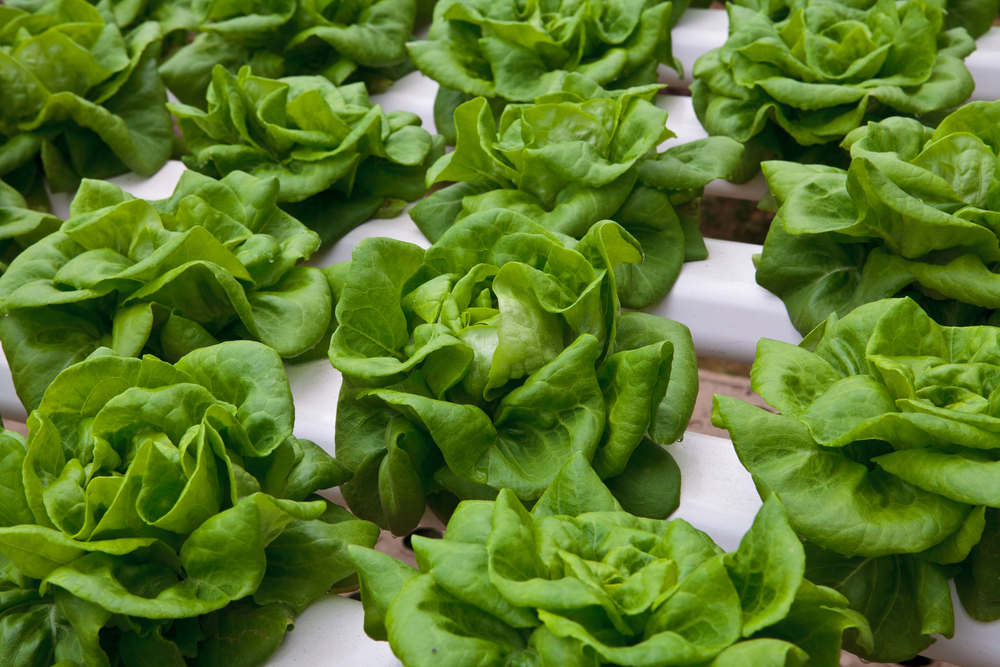Hydroponic Food Production

Farms take up a lot of open space. Movies and other media have accustomed most of us to the vision of a sweeping farm that goes on for miles in every direction. The crops stretch skyward as they try to draw in more sunlight and our food slowly grows. These are, of course, archetypal images. Most farms are a bit smaller than this and this is especially true for family farms. However, there is another circumstance where this image is wrong that not everyone is aware of: hydroponics. Hydroponic food production is the art and science of growing plants with soil. Those fond of science fiction may be aware of the ideas, but the reality is a bit less glamorous at the moment than the sci-fi equivalents. That doesn’t mean that hydroponics don’t have a place in society.
How Does It Work?
Hydroponics seems a bit strange at first glance. After all, how do you grow plants without soil? The fact is that the soil isn’t actually perfectly necessary for plants to grow. They need something their roots can pass through to anchor them, but the vital nutrients the plant needs to survive are easily provided through appropriately engineered mineral solutions. Hydroponics utilizes these water and mineral mixtures to provide both nutrition and hydration for the plants in a literal liquid diet. People vary the materials used to anchor the plants depending on the scale of a hydroponics setup. Small, personal kits available often uses sponges or similar materials to support their plants while larger scale, experimental farms often utilize gravel or a similarly permeable substance. The key is simply that the nutrient mixture and roots both need to be able to move within the substitute “soil” to keep the plants healthy. In doing so, it becomes possible to cultivate plants in non-traditional locations.
Urban Farming
One of the larger potential applications for hydroponics is in creating outdoor farms where there isn’t any soil. Soil is the biggest limiting factor in most cases where people want to grow food. Cities aren’t really lacking in soil, but they do tend to cover it all up with concrete and asphalt. Hydroponics offer a way for large scale cultivation in buildings or urban parks. A better utilization for this method may be by creating urban farms within warehouses or other large buildings to create compact farms within a city that provide locally grown food. It does offer those who are gardening hobbyists to indulge in a little indoor gardening themselves with some of the commercially available kits. These kits are seldom particularly large scale, but are capable of supporting a small number of plants for year-round growth with appropriate tending.
The Stuff of Dreams
The most exciting potential applications for science enthusiasts is the potential applications for sustainable hydroponics in space. Food is a routine problem when it comes to prolonged space travel. Spacecraft have to carefully allot for every bit of weight to ensure that they can break free of the planet and not use an excess amount of fuel. NASA and other space agencies focus on the potential in hydroponics specifically for this reason. Learning to successfully cultivate various crops via hydroponics would allow astronauts to engage in longer term missions without worrying about nutrition. Additionally, hydroponics would offer an easier way for potential colonization efforts as it would likely be impossible to cultivate Earth crops on an alien world otherwise. All of this may seem like the stuff of science fiction, but there are scientists around the world… and orbiting it that are devoting time to make it science fact.
As a soilless form of agriculture, hydroponics offers the potential to help expand food production around the world as the process is refined. Hydroponic food production is largely limited by crops having specific climate requirements and the overall size of the crops at the moment. This may change in the future. For now, those who want to have a better understanding can easily find a kit and potentially grow their favorite smaller crop all year long.

